As a youngster in the late seventies, I never would have guessed that 2017 would be a big year for trolls. Some of my earliest memories involve obsessing over the Moomins, cute trollish creatures from Scandinavia that looked like bipedal hippos. A couple years later my focus shifted to the book Gnomes, by Will Huygen, which depicts gnomes’ hidden struggles against monstrous trolls bent on capturing and eating them. These hirsute, grisly depictions of the enemy affected my dreams. Then, the Rankin & Bass illustrated edition of The Hobbit carried me deeper into fantasy; I wanted to be the characters in that world, fight against the same foes, or better yet, make friends with the trolls, goblins, and elves. I couldn’t get enough of Norse and Greek mythology, fascinated not as much by the famous exploits of the gods, but with the less defined stories of the giants, titans, and lesser monsters that had existed before the gods were even born.
What were these ancient elemental beings that were bound to the land only to fight and fall against the civilizing press of humanity? Why have they fascinated me, and so many others, since childhood and into adulthood? The world “troll” comes from Old Norse, and refers to an ill-defined class of supernatural beings from Norse and Scandinavian folklore. Some saw them as cognates of “giants” and “elves,” but over the centuries “trolls” have taken on an identity unto themselves—at times similar and/or related to both giants and elves, or perhaps even the result of shared blood between the two species.
Today, we have seen a resurgence of “trolls” in popular consciousness: as petty people that revel in sowing discord on the Internet; an animated movie voiced by some of our most adorable celebrities; Trollhunters is a hit Netflix show by one of our era’s fantasy masters, Guillermo del Toro; and Neil Gaiman has produced a fresh bestseller by returning to the Old Norse tales from whence the trolls first came.
I wonder if trolls don’t represent an important function in the subconscious of the present zeitgeist. The elemental powers of the giants that fought against the structured paradigm of civilization have died out and been forgotten. But as the climate changes due to humanity’s unchecked influence, and the natural world slips back toward a state of chaos, the old blood of the giants stirs again in the trolls—not passive and willing to fade quietly, like the elves and faeries, but angry, monstrous, and ready to fight back…
Here are five books about these mercurial creatures that have influenced me over the years, as relevant today as they ever were, and perhaps more so:
The Three Billy Goats Gruff by Peter Christen Asbjornsen & Jorgen Moe
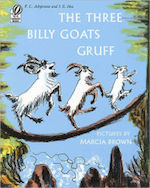 First collected and published in the 1840s, this Norwegian folk tale is likely the origin of the relationship between trolls and bridges. The troll does not come across as particularly clever, and the moral boils down to eat the first goat you find and save room for seconds. (I want more from my trolls. The myths spoke of them as being great magicians and brilliant tacticians as often as they were represented for their brute strength and savage nature. Trolls can be complex.)
First collected and published in the 1840s, this Norwegian folk tale is likely the origin of the relationship between trolls and bridges. The troll does not come across as particularly clever, and the moral boils down to eat the first goat you find and save room for seconds. (I want more from my trolls. The myths spoke of them as being great magicians and brilliant tacticians as often as they were represented for their brute strength and savage nature. Trolls can be complex.)
The Moomins by Tove Jansson
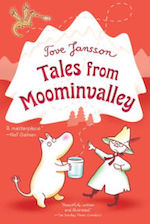 Though I do not have a solid recollection of these books and shows, I remember loving them at the time. These complicated hippo-like trolls were capable of emotional depth as they embarked on episodic adventures throughout a fairy and animal bedecked wilderness. The insightful tone of the loosely strung vignettes, both comforting and a little sinister, speaks effortlessly to childhood learning. The Moomin family displays nothing of the monstrous nature so often ascribed to troll kind, more concerned with philosophical thinking and self-assured action. (I love their thoughtfulness and belonging to the natural world, but I want my trolls to have earned a bit of their nightmarish reputation.)
Though I do not have a solid recollection of these books and shows, I remember loving them at the time. These complicated hippo-like trolls were capable of emotional depth as they embarked on episodic adventures throughout a fairy and animal bedecked wilderness. The insightful tone of the loosely strung vignettes, both comforting and a little sinister, speaks effortlessly to childhood learning. The Moomin family displays nothing of the monstrous nature so often ascribed to troll kind, more concerned with philosophical thinking and self-assured action. (I love their thoughtfulness and belonging to the natural world, but I want my trolls to have earned a bit of their nightmarish reputation.)
Gnomes by Wil Huygen
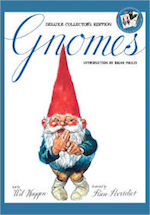 This one filled some of my earliest fantasy needs. The hidden world of the gnomes, and the trolls that hunted them, seemed oddly plausible to me. There was at least a full year when I must have flipped through those pages every day. (Again, these trolls were fairly one-sided and dim-witted, but their base, earthen savagery stayed with me and felt right.)
This one filled some of my earliest fantasy needs. The hidden world of the gnomes, and the trolls that hunted them, seemed oddly plausible to me. There was at least a full year when I must have flipped through those pages every day. (Again, these trolls were fairly one-sided and dim-witted, but their base, earthen savagery stayed with me and felt right.)
The Hobbit by J.R.R. Tolkien
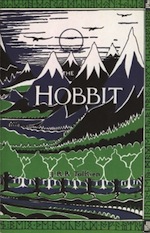 I almost skipped this one as it seemed too obvious—to be honest, it was the Rankin Bass cartoon version more than the book itself that so profoundly spoke to early me—but to omit it would be inauthentic to my trollish thinking. Three Stone trolls, Tom, Bert, and William Huggins, capture and discuss the eating of our fourteen heroes after a botched burglary attempt. These trolls are once again pretty dumb, but they make quick work of what are supposed to be an elite collection of dwarves who are only saved by the last minute cleverness of the Wandering Wizard. (The aforementioned savagery and greater fantasy world context for the trolls in this one showed me, and us all, the scope of what trolls, at their brutish best, could be. They had names, clothes, personalities, and a cave full of ancient booty. There was a treasure trove of unexplored myth there as well.)
I almost skipped this one as it seemed too obvious—to be honest, it was the Rankin Bass cartoon version more than the book itself that so profoundly spoke to early me—but to omit it would be inauthentic to my trollish thinking. Three Stone trolls, Tom, Bert, and William Huggins, capture and discuss the eating of our fourteen heroes after a botched burglary attempt. These trolls are once again pretty dumb, but they make quick work of what are supposed to be an elite collection of dwarves who are only saved by the last minute cleverness of the Wandering Wizard. (The aforementioned savagery and greater fantasy world context for the trolls in this one showed me, and us all, the scope of what trolls, at their brutish best, could be. They had names, clothes, personalities, and a cave full of ancient booty. There was a treasure trove of unexplored myth there as well.)
Beowulf
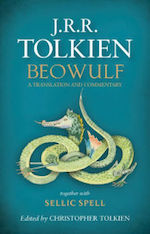 My friends and I turned this one into a comedic movie for a ninth grade school project. Making it was some of the most fun I’ve ever had—we all got A’s. Though it’s a topic of much debate among those who debate such things, Grendel, Grendel’s Mother, and even the dragon can be viewed as trolls. Grendel coming to Heorot to destroy the hall because of the din made there is akin to the Scandinavian belief that early church construction and bell ringing was often met by troll attack. Grendel is the consummate troll in appearance and action, but his mother is just as iconic in her representation as a powerful shape-shifting trollhag capable of birthing monsters—just as Angrboda birthed Jormungand, Fenris Wolf, and Hel in Norse myths. (These vengeful and powerful beings laid further foundation for the trolls I sought to emulate.)
My friends and I turned this one into a comedic movie for a ninth grade school project. Making it was some of the most fun I’ve ever had—we all got A’s. Though it’s a topic of much debate among those who debate such things, Grendel, Grendel’s Mother, and even the dragon can be viewed as trolls. Grendel coming to Heorot to destroy the hall because of the din made there is akin to the Scandinavian belief that early church construction and bell ringing was often met by troll attack. Grendel is the consummate troll in appearance and action, but his mother is just as iconic in her representation as a powerful shape-shifting trollhag capable of birthing monsters—just as Angrboda birthed Jormungand, Fenris Wolf, and Hel in Norse myths. (These vengeful and powerful beings laid further foundation for the trolls I sought to emulate.)
My trolls in Cold Counsel, SLUD and Agnes, are amalgams of the depictions in all these books, and many others. They are calculating and powerful, possessing of ancient wisdom and still hungry to learn, flawed and complex, yet sometimes base and simplistic at the same time. Equal parts dangerous and inviting, they are the watchers over dark dreams and bright nightmares. I wanted to uncover their histories and secrets; I hope you do too.
 Chris Sharp grew up in the suburban wonderland of Alexandria, VA, where he cut his nerd teeth playing role-playing games and making gore movies with his friends. He studied English Literature and Anthropology at Brown University, and Mayan Archaeology at the Harvard Field School in Honduras. He then spent sixteen years in Brooklyn, NY, where he worked in film and commercial production by day, and was yet another wannabe novelist by night. His epic fantasy novel, Cold Counsel, is available from Tor.com Publishing. Chris now lives in Concord, MA, with his wife, daughter and an insufferable cat named Goblin.
Chris Sharp grew up in the suburban wonderland of Alexandria, VA, where he cut his nerd teeth playing role-playing games and making gore movies with his friends. He studied English Literature and Anthropology at Brown University, and Mayan Archaeology at the Harvard Field School in Honduras. He then spent sixteen years in Brooklyn, NY, where he worked in film and commercial production by day, and was yet another wannabe novelist by night. His epic fantasy novel, Cold Counsel, is available from Tor.com Publishing. Chris now lives in Concord, MA, with his wife, daughter and an insufferable cat named Goblin.










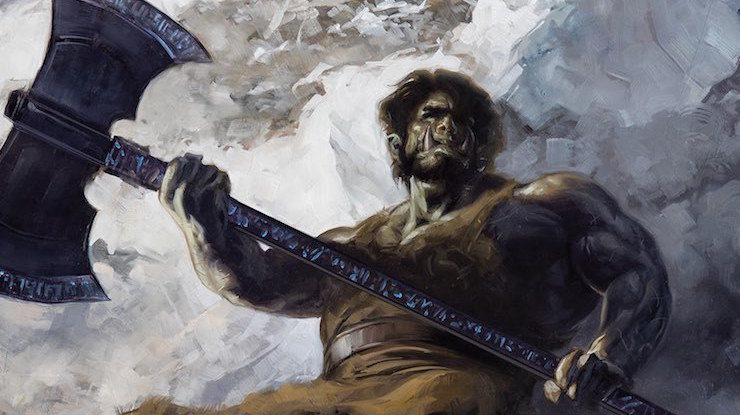
I strongly recommend reading or rereading (whichever is applicable) Tove Jansson’s Moomin books. She truly wrote for all ages, and the Moomin books take on even greater resonance when read in adulthood.
Terry Pratchett’s “Thud” also deserves a place on the list, and it deals with what happens when Trolls become urbanised and decide to try putting their ancient rivalry with Dwarfs behind them. It also deals with what happens when some of those Dwarfs don’t want to put that rivalry down. Plus how peace negotiations and mob bosses and troll specific drugs awareness all impact on the policing decision of one of the Discworld’s largest cities.
Worth mentioning (because I am a pedant): the internet troll (and its real-life offshoot) was originally a fishing term (e.g., “trolling for suckers”), and originally had nothing to do with those denizens of Utgard.
Connection between trolls and the Balrog in Tolkien’s worldbuilding? Hmmmm.
Trolls remind me of the Potter books, but also of my BFF’s grandfather, who didn’t live to see her, but who handed down to her the habit of hiding and then scaring the daylights out of people . . . he’d send his girls on errands then run and hide under the closest bridge like it was a troll bridge :)
In German there is obviously Christoph Hardebusch’s troll series.
I can’t find the Scandinavian children’s book about trolls I remember from my childhood, but here are some others:
Oh, these look great! Thank you Birgit and others for the suggestions. I’ve also put in an order to defamiliarize myself with the Moomin books. I’ll unleash all of these on my daughter.
One of the later books in the Dresden Files series covers the “Billy Goats Gruff” in a modern setting.
Trolls play a major role in David Eddings’ series The Elenium and The Tamuli.
Thank for reading my musings.
AndrewHB
I think I need to read a lot more…
Keep it coming people! Who else has some good TROLL books?
Time to take the word back from cute crazy-haired toys and ranting online a-holes.
(And, yes, that internet usage was derivative from “trolling” and not trolls at first, but the meaning has changed since its inception to include the bastardized “monstrous” connotation.)
I love you all. Thank you for reading and commenting
This is a bit of a stretch, but it has the word “troll” in the title (and could be considered a feminist retelling of Beowulf, which you referenced) so I’ll throw it in anyway: the story “The Sea Troll’s Daughter” by Caitlín R. Kiernan.
“Kathleen Tierney” (a pen name of Caitlín R. Kiernan) has a rather neat, ugly, but not at all stupid troll in Blood Oranges, which is a sort of grisly-gonzo take on paranormal urban fantasy. Not a lot of trolls in urban fantasy, though there’s also the bridge troll Danny in Seanan Mcguire’s October Daye books..
Ben Aaronovich includes passing reference to a few trolls in the Rivers of London series. As the world-building grows more complex with each volume, we may see more of them in future.
@2: Yes, and I would recommend the whole Discworld series for its complex, interesting trolls. They might be most prominently featured in Thud! but also appear in most of the other City Watch books, Moving Pictures, Monstrous Regiment, The Color of Magic, The Light Fantastic, and more.
@16 – Let’s not forget the short story “Troll Bridge” which is available on the interweb.
You guys are bolstering my faith in the deathless need for troll lore. I thank you all.
I’ll heartily recommend taking a look a Poul Anderson’s The Broken Sword.
Needless to say, it’s a personal favorite.
Ursula Vernon has done some wonderful trolls. Her philosophy:
Here’s one of them:
http://ursulav.deviantart.com/art/Troll-and-Squash-33754118
Here is another one, who has a boo-boo:
http://ursulav.deviantart.com/art/Sings-to-Trees-First-Aid-22861660
And they play an important role in two scenes of her webcomic, Digger. (The entire thing is free online, so hopefully this will get some more people hooked!)
http://diggercomic.com/blog/2007/10/20/digger-228/
http://diggercomic.com/blog/2007/12/05/digger-287/
If you’re a gaming sort, you may be interested in Ron Edwards’ Trollbabe, an RPG where you play a trollbabe: “Part human, part troll, and it doesn’t matter how they got that way. They’re tough, they’re magic, and they’ve got horns. Every adventure starts with a trollbabe walking somewhere, and finding herself in someone else’s mess.”
(from the rpg.net review: https://www.rpg.net/reviews/archive/16/16120.phtml )
http://adept-press.com/games-fantasy-horror/trollbabe/
Take an outrigger canoe to Papua New Guinea (or West Papua: we mustn’t forget them! :) and meet some troll relatives:
ht tp://thslone.tripod.com/masalai.html
New Zealand Maori folklore speaks of taniwha and maero, spirits of the forest and water that can be hostile to humans.
Prof Tolkien talked about wanting dragons in his imagination; I’ve always wanted masalai, and trolls were the nearest Northern European equivalent. (For what very very little it’s worth, I was once spotted by a local villager while I was running to my parents’ house at the top of the local hill, and he shouted out, “Bai masalai i kaikaiim yu tasol!” (The local forest spirit will eat you (if you don’t watch out!))
I think a good part of the current fascination with trolls can be ascribed to the understanding that nature is not at all cute and cuddly, and will punish missteps with often fatal consequences.
If Moomins count as trolls, Florins might qualify, too.
Patricia Briggs’ Fire Touched starts with fighting a troll.
It’s an older book, but Ekman’s Forest of Hours is about a troll wandering out of a wild forest and into Middle Ages Europe. The troll starts out with no language or name or even much in the way of thoughts, but slowly learn about humans and their ways.
It was a scrawny little troll, unknowing and guileless, and not much given to thinking at all. There was little more than fluttering, like the wings of jays, going on under that tussock of hair -tFoH
Trolls figured significantly in the first Shannara novel, The Sword of Shannara. Not so much after that (although I haven’t read them all).
There are several versions of the fairy tale East of the Sun, West of the Moon which feature complex magical trolls.
Robert Asprin’s Myth series has the Troll Chumley, and his sister the Trollop Tananda who do a good job of contradicting standard troll characteristics
In Barry Deutsch’s graphic novel Hereville: How Mirka Got Her Sword, Mirka gets her sword in a rather unexpected manner from a rather unexpected troll.
Birgit @20: I think that may be the first time Trouble for Trumpets has ever come up on Tor.com, and it just made my day–I’ve been in love with that book since I was five, and still have a battered copy carefully tucked away (still holding out hope that it will come back into print some day…)
I have so much more trollish reading to do, and need more money than I have to spend to bolster my library.
But I will expand my troll horizons, pick all the best parts from them all, and then steal mercilessly for my next deep delve into troll-based storytelling!
“They have a cave troll!”
That aside, I once read somewhere that the first Moomin came into existence when Tove tried to draw her brother :) These are delightful books with delightful characters, my own personal favourite has always been Snufkin.
Whenever I think about trolls in the classical sense, I am reminded of Norway and although I have never seen it myself, I think “Peer Gynt” surely deserves mentioning (I still remember when our music teacher played us the track “In the Hall of the Mountain King” in class.)
We do not have many trolls in Estonian folklore, mainly other kind of spirits and beings, but there is a children’s book “Sookoll ja sisalik” (“The ogre and the lizard”) by Aino Pervik and that guy looks more like a troll than an ogre to me
Tolkien’s trolls had a last name?
@28 Celebrinnen,
An interesting aside about Trollhunters: the series uses “In the Hall of the Mountain King” as a recurring motif in several episodes.
snoweel: Just bad William “Bill” Huggins – the presumed leader of the three cave trolls that appear in the Hobbit.
I always liked him best, largely due to his off-putting last name.
Don’t forget the trolls in Elfquest.
+1 for Moomins and Pratchett
I also had the Gnomes book, but the one that hooked me on trolls was D’Aulaires’ Book of Trolls, by the same folks that made D’Aulaires’ Greek Myths and D’Aulaires’ Norse Gods and Demons. Those three were staples of my childhood.
I came across the Moomins taking a YA literature class and fell in love with the characters. It was amazing that as I read the series, I would identify people that I knew. The characters were so well developed that you could recognize human characteristics in them. I read all the books in the series and then later managed to find copies of the graphic arts stories.
I think it is time to dig them out of the boxes and do a re-read.
Many years ago I read a small-press literary novel called “Troll” in which a gay Scandinavian man finds a young troll freezing, takes it home to rescue it, and then finds that it’s a lousy housemate but weirdly compelling. Fairly good book, actually.
https://www.amazon.com/DAulaires-Trolls-Review-Childrens-Collection/dp/1590172175/ref=sr_1_1?ie=UTF8&qid=1488482225&sr=8-1&keywords=book+of+trolls
D’Aulaire’s Book of Trolls is tremendous fun, as are their books on Greek and Norse mythology.
I have to admit that the D’Aulaire’s Book of Trolls was a big one for me as a kid as well. I was trying to remember the name of it and never quite figured it out as I was putting the blog together. It definitely deserves to be on my list of big troll influences – as was their book of Greek mythology.
Also the Hilda books (graphic novels) by Luke Pearson. Beautifully drawn with a strong lead female character.
No list of books about trolls is complete without mentioning Nancy Farmer’s historical fantasy Sea of Trolls. Her trolls are not fey creatures or brutish monsters, but a non-human race with its own distinct culture, living alongside humans in Viking-era Scandinavia.
Poul Anderson’s Three Hearts and Three Lions has a classic adventure sequence with a troll, complete with riddles. To this day, “I lied about the wheels” is an all-purpose excuse in our house.
I still have childhood Gnomes book in my collection! 1976/1977